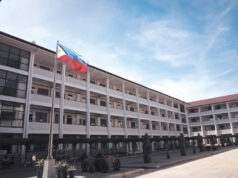The Bureau of Customs (BoC), in recent years, has introduced transformative measures that have helped regain public trust and confidence to the agency. Through its unwavering efforts of improving its operational processes, the bureau was able to raise its revenue earnings, suppress corruption, improve trade facilitation, strengthen anti-smuggling operations, and enhance its personnel welfare.
Despite its several accomplishments, the BoC, under the leadership of Commissioner Rey Leonardo B. Guerrero, is looking to achieve more positive changes this year.
The BoC concluded 2018 remarkably. Based on the preliminary data from the agency’s Financial Service, the bureau was able to hit its revenue target last year after collecting P585.542 billion. The tax collection of the bureau grew by 27.8% compared to its total revenue collection of P458.18 billion in the previous year.
The initial figures also showed that 14 out of the 17 bureau’s collection districts surpassed their annual revenue collection targets.
The Port of San Fernando collected P3.532 billion in revenue, recording an excess of P317 million as against its full-year target. The Port of Batangas generated P142.122 billion or a surplus of P4.121 billion while the Port of Legazpi had P407 million or an excess of P118 million.
The Ports of Iloilo and Cebu posted P4.032 billion and P28.904 billion revenue collections, which are P812 million and P2.497 billion over its annual targets, respectively.
The Port of Tacloban, on the other hand, had a surplus of P764 million after collecting P1.105 billion in revenue. The Ports of Surigao and Cagayan de Oro recorded P36 million and P21.483 billion revenue collections or an excess of P15 million and P4.467 billion, respectively.
Also exceeding their revenue goals were the Port of Zamboanga with P421 million revenue collection or a surplus of P138 million, the Port of Davao with a revenue amounted to P25.966 billion or an excess of P6.485 billion, the Port of Subic that generated a revenue of P22.341 billion or an excess of P1.171 billion, and the Port of Clark that collected P1.935 billion in revenue or a surplus of P378 million.
The Ports of Aparri and Limay completed the list, with revenue collections reaching P149 million and P40.714 billion or a surplus of P90 million and P4.322 billion, respectively.
Not far from reaching its collection targets were the Ports of Manila and Ninoy Aquino International Airport with total collections of P86.191 billion and P40.85 billion against its revenue targets of P88.103 billion and P46.171 billion, respectively.
The Manila International Container Port, the district with the highest annual revenue target of P180.656 billion, collected P165.075 billion.
It is worth noting that the BoC consistently hit and exceeded its monthly revenue goals for eight consecutive months from February to September in 2018.
The feat, according to Mr. Guerrero, was attributed to the strong collection performance of all the collection districts and the continuing support and cooperation of the men and women of the BoC and its stakeholders.
The Customs chief also noted that while they seek ways to stop corruption in the BoC, the improvement of the bureau’s revenue collection performance will remain a top priority.
“We still need to strengthen our collection efforts and do better to achieve our goal of a consistent and enhanced collection performance,” Mr. Guerrero said.
Meanwhile, in its bid to strengthen its anti-smuggling operations, the BoC recently signed a new memorandum of agreement (MoA) with the Philippine Drug Enforcement Agency (PDEA).
Through the said MoA, the two agencies shall hold monthly regular meetings to discuss operational matters, the current status of the programs implemented under the agreement, and the strategies necessary to meet their objectives.
Prior to this, the BoC, together with the Armed Forces of the Philippines (AFP) and the Philippine Coast (PCG), in November last year, signed an agreement for strengthened linkages and enhanced coordination to protect the vital interests of the country.
To further tighten its watch on the illegal movement of goods into or out of the country, the bureau will install 50 x-ray machines worth P1.2 billion in various airports and seaports nationwide this year.
According to the BoC’s X-ray Inspection Project, these x-ray machines are capable of identifying dense areas and apply the high penetration feature only to the dense area of the shipment. The machines are also capable of discriminating between organic and inorganic materials, and with Threat Image Projection (TIP) which is capable of automatic projection of threat images to enhance the alertness of the system operators. — Mark Louis F. Ferrolino



